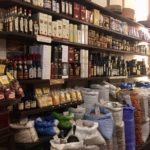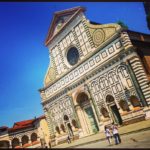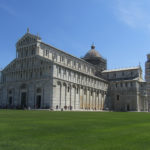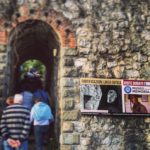City of Florence

Time passes, yet Florence remains one of the most iconic art cities in the world. Between the 14th and 16th centuries, it took the world by storm and became, after Ancient Greece, the most astounding breeding ground of intelligence, giving birth to a new culture.
The legacies of Dante, Giotto, Botticelli, Leonardo, Brunelleschi, Donatello, and the ‘divine’ Michelangelo, to name a few, are visible in the streets, monuments, and extraordinary palazzos and museums of the city. Florence’s historical center is a designated UNESCO World Heritage Site.
The culture of beauty is perceptible everywhere and blends in perfectly with age-old Tuscan traditions; elegant shops and marketplaces amalgamate with unforgettable scenery.
Meet the guide and visit:
- Cathedral of Santa Maria del Fiore. A symbol of the artistic genius of the major Tuscan architects, from Arnolfo di Cambio to Giotto to Filippo Brunelleschi, designer of the cathedral’s famous dome, with artistic and technological revolutions spanning from the Gothic period to the Renaissance.
- Giotto’s Bell Tower
- Baptistery of San Giovanni. Dedicated to the city’s patron saint, it is one of the oldest and most important Romanesque edifices in Tuscany. Inside, there are spectacular mosaics representing episodes from the Old Testament. Today it is still a reference point for the most significant religious celebrations of the city.
- Church of Orsanmichele. This was formerly a loggia for the sale of grain and was subsequently converted into a place of devotion for all the trade guilds of Renaissance Florence. To decorate the exterior, the guilds were to provide statues of their patron saints, which were executed by the best Renaissance sculptors of the time.
- Characteristic medieval streets which lead to the house of the poet, Dante Alighieri, who is considered to be the father of literature and the Italian language.
- Piazza Santa Croce. The Franciscan Church of Santa Croce is located in this square named after the church. Funeral monuments of famous Italians are housed in its interior, in addition to a series of 14th-century frescoes begun by Giotto. To view the interior of the church, there is an entrance fee.
- Piazza della Signoria. This piazza represents the heart of the political life of the Republic of Florence and continues to be the political center of the city. Palazzo Vecchio dominates the square and is the town hall of the city, but was also the former seat of government for the City State and the Grand Duchy. In front of the palazzo is a life-size replica of Michelangelo’s David. Also worthy of interest is the Loggia della Signoria, also known as the Loggia dei Lanzi, an open-air ‘museum’ of antique and Renaissance sculptures.
- Ponte Vecchio. This medieval bridge is famous for the stunning views of the city along the Lungarni (the streets that run alongside the Arno River) and for its many bright and glittering jewelry shops.
- Loggia del Porcellino (Little Pig). This was, and still is, a very busy and characteristic marketplace. The loggia is so named because of the presence of a bronze sculpture of a wild boar. They say that if you rub its snout, it will bring you good luck.
- Piazza della Repubblica. This was the site of the ancient Roman forum of Florentia. Today it accommodates some of the most elegant and iconic cafes of Florence.
Please note: Entrance fees are extra.




